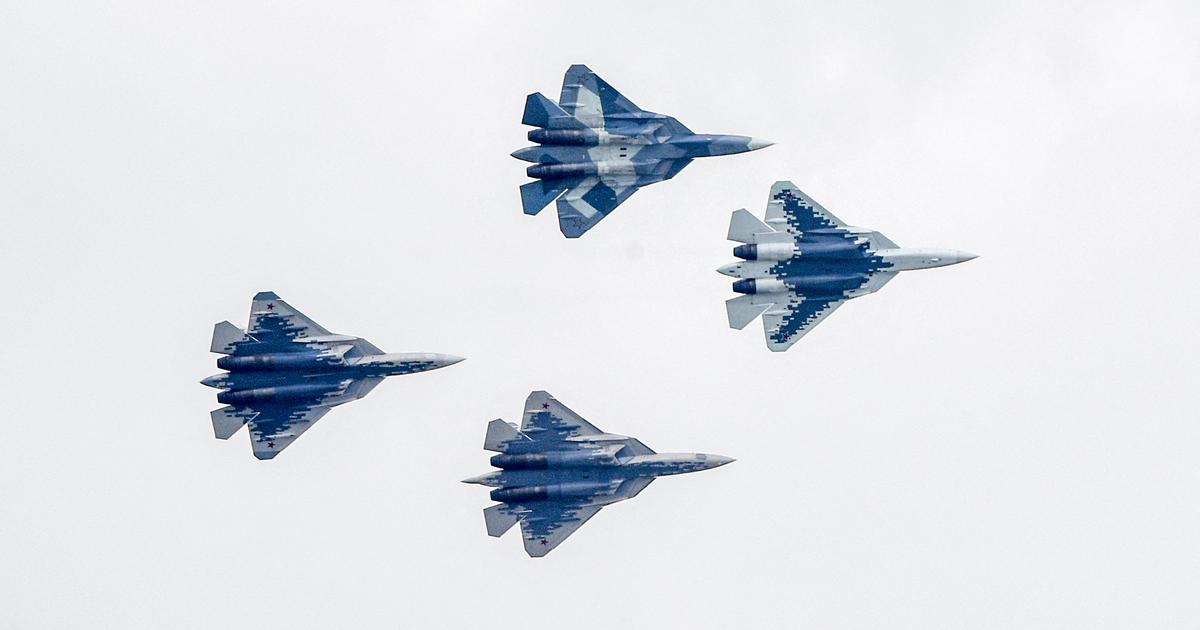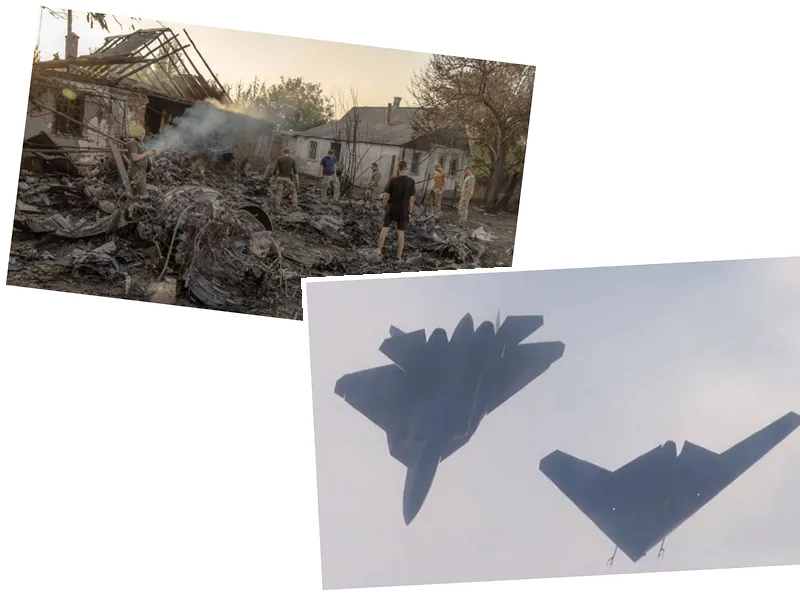Ukraine has reportedly struck a significant blow to Russia by damaging one of its most advanced fighter jets, the Su-57, in an attack that took place at the Akhtubinsk air base in Russia. Ukrainian military intelligence provided satellite images showing the Su-57 before and after the attack, claiming that the aircraft was intact on June 7 but damaged with visible fire spots by June 8. The method of the strike remains unspecified, although some sources suggest it was carried out by a drone.
The Su-57, presented as a competitor to the American F-22, is a sophisticated example of Russian military technology, costing approximately $35 million per unit. The loss or damage of this fighter jet is a significant setback for Russia's limited stealth fleet. Notably, Russia has yet to confirm the incident, and an official response has been conspicuously absent. However, prominent Russian bloggers and the Institute for the Study of War (ISW) have expressed concerns about inadequate protection for such high-value military assets.
This incident highlights Ukraine's evolving capabilities in countering Russian air might and signifies a crucial victory in the ongoing conflict. The limited deployment of the Su-57s, generally reserved for long-range missile launches, underscores the risk Russia faces in deploying its advanced aircraft in active combat zones.
The broader context of this development in the Ukraine war sees heavy losses for Russian forces. Ukrainian reports indicate substantial Russian casualties and damaged military equipment, including tanks, artillery systems, and aircraft. Recently, high-level discussions between US President Joe Biden and French President Emmanuel Macron have underscored continued Western support for Ukraine. This includes potential financial aid sourced from frozen Russian assets and further military assistance.
Meanwhile, on the political front, notable figures within Europe have voiced differing opinions on support for Ukraine. Sahra Wagenknecht from the Alliance Sahra Wagenknecht (BSW) has argued against further arms deliveries to Ukraine, advocating instead for negotiations with Vladimir Putin. Contrastingly, other leaders, including German Chancellor Olaf Scholz, have emphasized the importance of stopping Russian aggression by supporting Ukraine.
As the conflict extends beyond direct military engagements, there are reports of Russia attempting to coerce African migrants into service, reflecting the multifaceted and increasingly complex nature of this prolonged war. Furthermore, NATO is considering strengthened support for Ukraine, potentially establishing a permanent envoy to bolster coordination and assistance efforts.
- The destruction or damage of Russia's Su-57 by Ukraine could mark a pivotal moment in the ongoing conflict, showcasing Ukraine's enhanced strategic capabilities and the vulnerabilities in Russia's military defenses.
- Western allies continue to play a crucial role in supporting Ukraine through military and financial aid. The agreement between Biden and Macron signifies a united front in leveraging frozen Russian funds for Ukraine's defense, exemplifying international efforts to counteract Russian aggression.
- The differing political opinions within Europe regarding support for Ukraine highlight the nuanced and often contentious debates surrounding the conflict. Statements from figures like Sahra Wagenknecht and Alice Weidel reveal a spectrum of views on military aid and diplomatic approaches to the war.
- Reports of Russia forcing African migrants into combat underline the severe and often underreported human rights abuses occurring as part of the conflict's broader impact. This dimension of the war adds to the complexity and urgency of international responses and humanitarian efforts.
- NATO’s potential appointment of a permanent envoy to Ukraine underscores the alliance's long-term commitment to supporting Ukraine, indicating a strategic shift towards more sustained and coordinated military and political aid.
- The intense military engagements, including Russia’s increased attacks on several Ukrainian regions and Ukraine’s defensive operations, continue to define the frontline dynamics of the conflict. Recent figures reported by Ukrainian officials illustrate the heavy toll on Russian forces, further underscoring the high stakes of the war.






